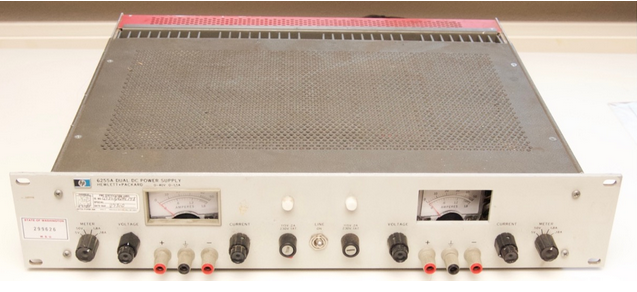
Linear power supplies can be really good regarding noise and ripple, but what they are normally not is energy efficient. At low power levers, this can be ignored, but a high power, wide voltage range lab power supply could burn away tremendous amounts of heat when shorted. Big coolers and fans can handle this, of course. Still, this is not a satisfying solution.
There are several ways to attach the problem of low efficiency. You could:
Switch transformer taps. This has been done a lot by commercial bench power supplies. It can be done using either semiconductors (better) or relays (worse) for switching. The advantage is no added noise and ripple, but you have some “range switching” circuitry that ensures that there is always enough voltage headroom left to the linear regulator. Not as quite as efficient as a switching supply, but still good as maximum dissipation can be cut in half or even less with more ranges.
Use SCR Preregulators. Often used commercially for higher powers in the past, they can run in asynchronous mode (switch them on if the input/output differential gets too low, whatever the time in the line cycle might be) or by regulating the firing delay by a proportional control loop. By principle, reaction time of SCR solutions are always at least a half line frequency cycle, so care must be taken that there is always enough charge in the buffer caps to survive this in case of a load change without a dip in output voltage. SCRs are normally slow and dont create so much RFI, especially when you filter and snubber your circuit properly. Old HP manuals can show you how its done. For low voltage output supplies, the SCRs normally sit before the mains transformer.
Use a MOSFET on/off switch. Can be made similar to the SCR solution, but now you could switch them on and off even within a mains line cycle if needed. The logic is more complicated and it creates more spikes than the SCR solution due to faster switching.
Use a higher frequency switching regulator to bring down the input voltage of your linear regulator just a few volts above the output voltage. The switching regulator has high efficiency, so the power dissipated in the pass transistor of the linear regulator is just the voltage difference between its input and output multiplied with load current. Heatwise, this is very effective, the problem here is to get rid of the high bandwidth spikes and noise introduced by the switching circuitry.
Switching Transformer Taps
This can be done by relays (I wont cover those because I think this is inadquate nowadays because of contact wearout caused by constantly switching “sparky” inductive loads and high inrush currents into filter capacitors), by SCRs or even MOSFETs.
In an HP Journal article they explain how the range switching is done using triacs:

The triacs are fired using a 18kHz pulse train. The HP Journal pages can be seen here:
Click here for a Hp Application Note describing a Wide Ranging Power Supply Of Compact Dimensions …
Using this scheme, you could choose from 4 input voltages into your linear regulator (all triacs off, N1 on, N2 on, all on).
An elegant circuit from and old Elektor book is shown here:

You need a center-tapped transformer and it works with logic level inputs.
SCR Preregulators
A schematics of how this is done is shown below (look at middle left, from an old HP power supply service manual):

Click here for a Larger Resolution Picture …
Another example of a continuous SCR preregulator at the primary side is shown below:

Click here to see a Power Supply With Primary SCR Regulation from SGS …
The IC generates the firing pulses and controls timing.
An example for a continuos regulator for the secondary side is shown here (from a Delta lab power supply from the end of the 70ies) :
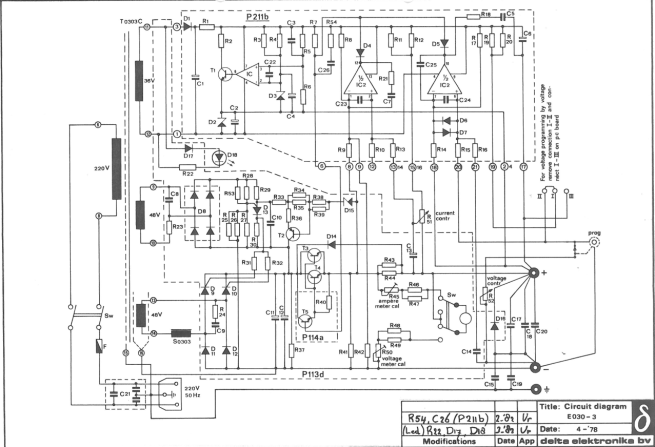
An example of a discontinuous regulator is shown below. If the difference between output and input voltage of the linear regulator gets too large, the triac will not fire.
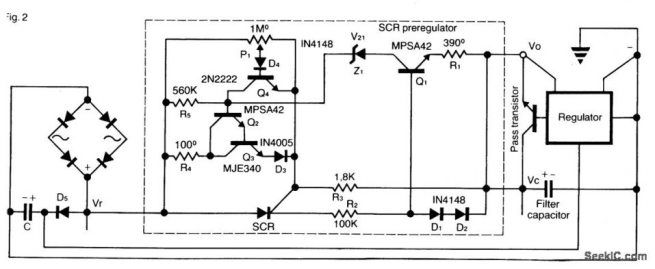
Some words of warning for SCR regulators:
- The load current can become a series of narrow pulses instead of a sinusoid current. Transformer rating must be increased accordlingly (by 50 ..100%), otherwise saturation is likely.
- Depending on transformer construction, “bumpy” noises are normal for SCR supplies when handling variable heavy loads.
- Not all combinations of voltage settings and loads result in a constant phase angle SCR trigger behaviour. This is a chaotic control loop, so you can expect “snarling” noises at certain load settings.
- Use snubbers and proper line filtering at the input of your PSU to avoid congestion of the power grid network with RFI.
MOSFET Preregulators
Instead of SCRs you could use MOSFETs as preregulator switches, like in the picture below:
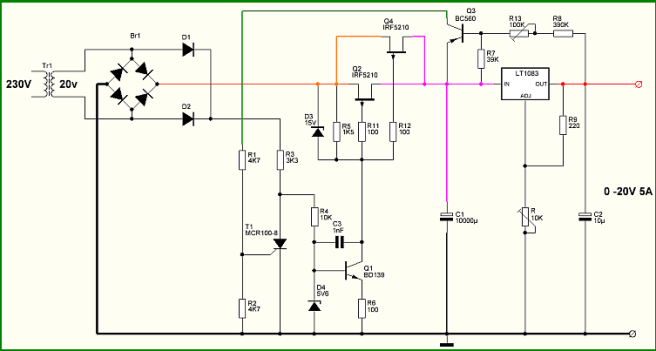
In case the input output differential gets too large the SCR (can be emulated with two transistors) fires and shuts off the P-Channel MOSFETs. As long th differential is small enough the MOSFETs are fully conductive and charge the input cap of the linear regulator. This is again a discontinuous regulator, like the SCR ones.
High Frequency Switching Preregulators
A nice example of such a beast is a design by ChangPuak shown here:
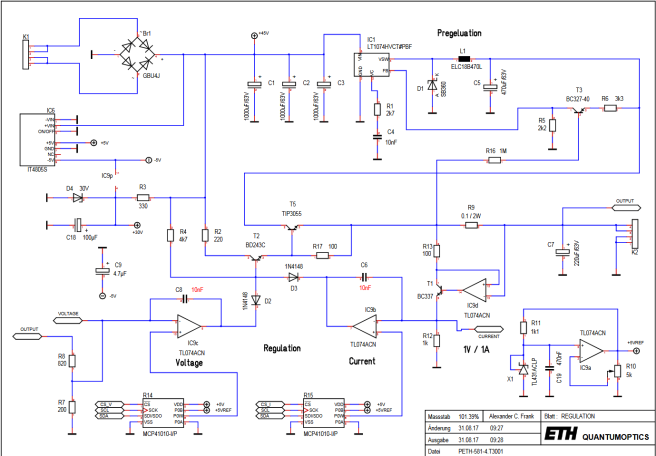
Click here to see a Switching Regulator with a Linear Afterburner from ChangPuak …
This one uses a Linear Tech switcher IC that allows a very simple design.
Literature
Some principles are explained in an HP application note, see below:
Click here to see a HP Application Note about Linear Power Supply Operation …
